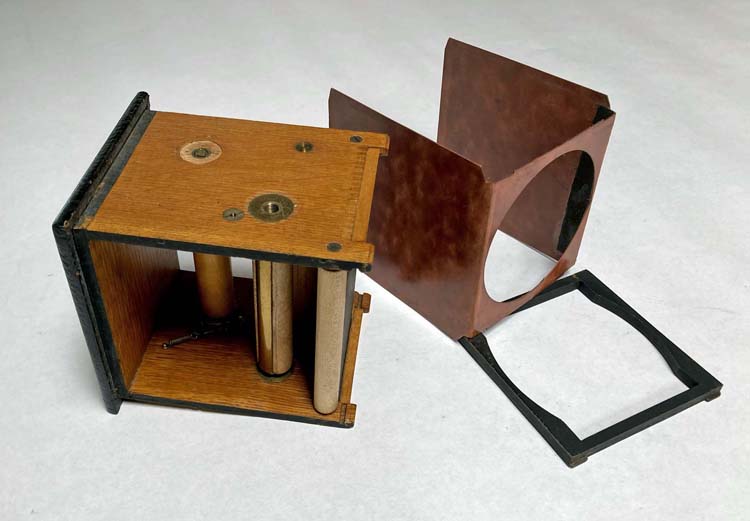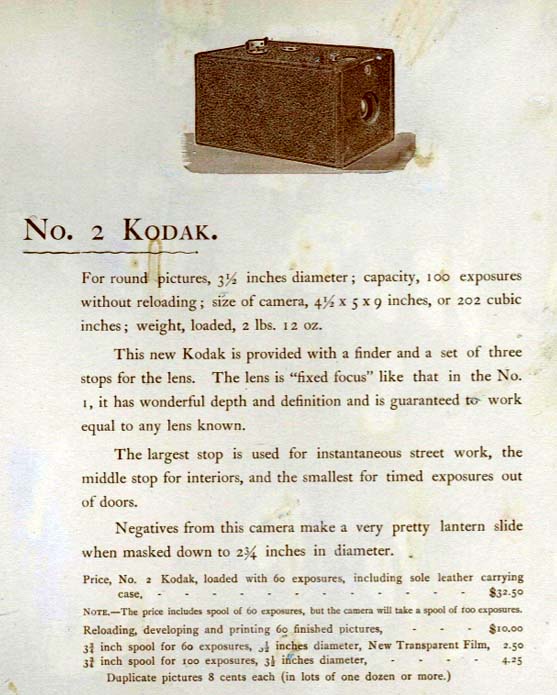KODAK NO. 2 - String-Set
1890


In 1889 Kodak introduced the Kodak No. 1, an updated version of the original 1888 Kodak, with an improved sector shutter replacing the problematic barrel shutter. At the same time, they offered the new Kodak No. 2, which was nearly identical to the No. 1 except that it is slightly larger, taking 3½” diameter round pictures rather than 2½”, and has a viewfinder mounted above the lens. The front panel is hinged at the bottom to access the lens and shutter.
An advantage claimed by Kodak was that since the pictures were round, the photographer did not need to worry about holding the camera perfectly level. Like the first Kodak, the camera came pre-loaded with film (60 exposures, or at additional cost, 100).

The consumer took pictures and used up the roll, then packed up the camera and shipped it back to Rochester, NY, where (for $10) the film was removed, developed, and printed. Then a new roll of film was installed and the camera shipped back to the owner.
The No. 2 Kodak was produced from 1889 to 1897 and cost $32.50 (pre-loaded with film), which was a significant sum at the time – equivalent to $900 in today's dollars.
According to factory records in the archives of the George Eastman House, this specific No. 2 was made in January 1890.
The designation “string-set” refers to the way the camera shutter is armed. Pulling up the string by the small brass knob on top prepares the shutter to be fired by pressing a button on the side. Both of the earliest Kodaks used a fixed focus lens. There are no adjustments to make for ordinary outdoor pictures, in sunlight.

The camera is in amazing condition, with no serious wear or damage, and is complete with the original felt lens plug. The exceptional condition likely resulted from the fact that it was stored for over a century in its original leather carrying case, which is also in surprisingly fine condition except that it's missing one clasp. The case shows some wear but is intact except for the shoulder strap, with only a short split on the edge of the lid fold, and is stamped inside with the Eastman name.

(RETURN TO MAIN KODAK PAGE)





